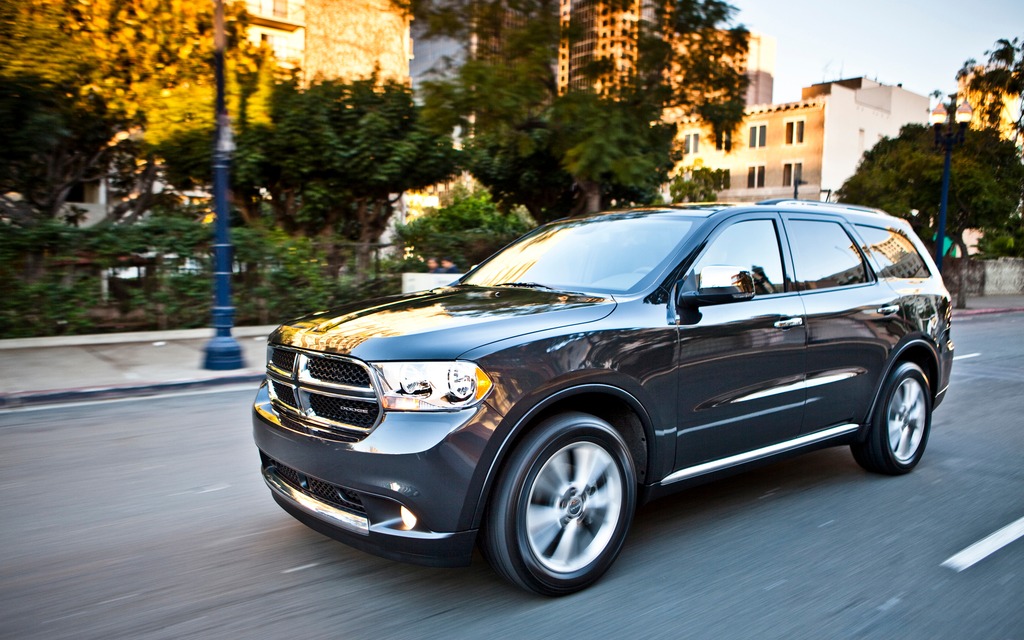2013 Dodge Durango: A Comfortable Family Workhorse

Towing presents a unique problem to SUV shoppers who need to balance the needs of daily transportation with the ability to tug a boat to the lake on the weekends. For many years the only real option for those with the desire to tow more than the 2,500 kilograms allotted by the biggest of the crossover crowd was to select from the ranks of either full-size pickups or full-size, body-on-frame sport-utility vehicles riding on truck platforms. For various reasons - size, comfort, drivability, or fuel mileage – this conundrum has been a frustrating one for anyone interested in pressing their tow machine into daily driver duty.
Enter the 2013 Dodge Durango. While the Durango might share its namesake with pickup-based SUVs of the past, it actually borrows most of its mechanical identity from the Jeep Grand Cherokee. This ensures two things: a strong, unibody design that is as rugged as it is pliable on smooth pavement, and the option of rear-wheel drive, which is universally preferred as a tow platform over front-wheel drive layouts. Moving beyond its hauling specifications the Dodge Durango also impresses when its time to get the entire family from point A to point B, and it doesn’t shirk from hauling cargo as well as people. This is one Dodge SUV that can adapt to whatever role it has been asked to fill.
Read also
Ample Interior Room
Now that I’ve established the 2013 Dodge Durango’s credibility as a brawny, practical towing vehicle (complete with electronic trailer sway control), let’s take a more detailed look at how the SUV handles its more precious human cargo. The model I test drove for a week came in Citadel trim, which represents the top tier edition of the Durango. Starting at just under $50,000, the Citadel has been equipped to take on the luxury-class trucks that hang out in this particular price range. What this means is standard amenities such as heated and cooled leather seats, a heated steering wheel, a navigation system with a touchscreen (that also doubles as the vehicle’s entertainment headquarters), rain-sensing windshield wipers, a rearview camera, parking assistance, and a blind-spot monitoring system,
Take a deep breath, because that’s not all that the Durango Citadel has to offer. The vehicle’s three rows of seating can accommodate up to seven passengers, or six if the second row captain’s chairs replace the standard bench. I was able to easily find my way into the third row thanks to the easy collapsibility of the Durango’s accommodations, and once there I was pleased to find adult-friendly legroom and just enough headroom to get by. The second row – which reclines – is even more generous in both of these areas, despite the fact that my tester also came with an moonroof and a ceiling-mounted DVD player that each ate up a bit of vertical volume. Cargo space tops out at 84.5 cubic feet, which is a decent number for the segment, but space between the hatch and rear seatback is limited with a full load of passengers in place.
Two Engine Options: Not Quite, and Just Right
The 2013 Dodge Durango is offered with the choice of either a six-cylinder or eight-cylinder engine under the hood. The vehicle’s 3.6-liter Pentastar V6 delivers 290 horsepower and 260 lb-ft of torque (and throws in a tow rating of 2,812 kg), and is matched with a five-speed automatic transmission. Opting for the 5.7-liter, 360 horsepower V8 bumps the towing capacity of the Durango up to 3,272 kg, thanks in part to its 390 lb-ft of torque. The V8 Durango’s autobox gains a forward gear compared to the six-cylinder, and it also benefits from the availability of a low-range four-wheel drive system as opposed to the former’s all-wheel drive option.
My Durango Citadel featured both the Hemi and four-wheel drive, and aside from a bit of fuss when engaging the low-range feature (the transmission has to be in neutral, and traveling below a certain speed) I found the truck to be surefooted in all manner of slick conditions. The V8 was a good, but not exciting match for the Dodge SUV, as it provided decent acceleration but didn’t feel quite as quick as some of the other vehicles in its class. As for fuel mileage, the V6 is rated at 14.7 l/100 km city and 10.23 l/100 km on the highway, which isn’t all that bad, but the V8 drops that figure considerably in real world driving, where I observed 25 l / 100 km in a heavy stop-and-go mix during snowy conditions. The Durango’s advertising doesn’t highlight its efficiency, and buyers should be aware that this is one thirsty truck when the Hemi engine is specified.
From a ride perspective, the SUV felt planted at all times, a testament to its independent rear suspension setup and its unibody design. The Durango doesn’t feel as much like a sedan as some of its competitors, particularly the Chevrolet Traverse or the Nissan Pathfinder, but then again its stiffer nature gives it significantly more stability and strength when loaded down with a trailer.
A Comfortable Family Workhorse
The laws of physics remain immutable: something that is big, heavy, and long will almost invariably display these characteristics when it comes time to round a corner or fill up at the fuel pump. Those three aspects of the 2013 Dodge Durango’s design, however, are also an important part of is highly practical appeal, and so I am not lamenting their presence - merely pointing them out so that potential buyers go into Dodge showrooms with open eyes. The Durango is designed to get the job done, it’s capable of serving as a comfortable daily driver for families large and small, and despite its plus-size dimensions it runs rings – dynamically, at least – around its full-frame cousins.









